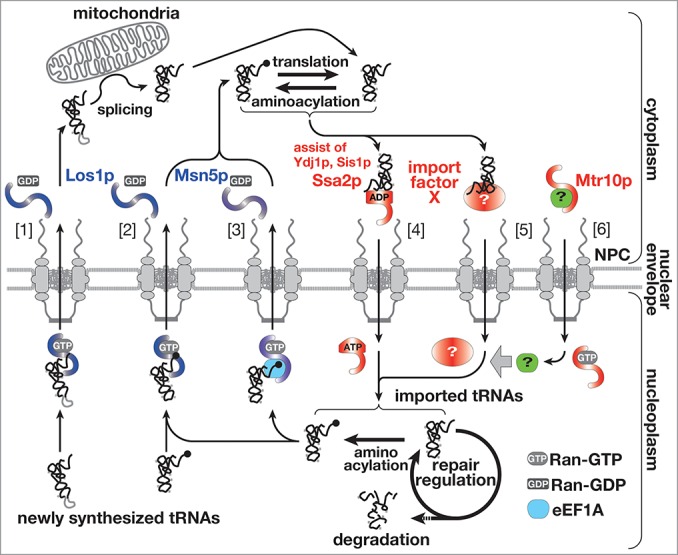Figure 1.

The updated view of tRNA dynamics in S. cerevisiae. Nucleocytoplasmic transport of tRNAs is schematically represented. tRNA export in the yeast is mainly catalyzed by Los1p and Msn5p. Los1p exports newly synthesized and imported mature-types tRNAs [2] in addition to intron-containing precursor tRNAs [1]. Msn5p is responsible for re-export of imported tRNAs complexed with eEF1A [3]. On the other hand, various cytoplasmic tRNAs are imported into the nucleus (here, only a deacylated mature tRNA is shown for simplicity) by Ssa2p [4]. At least, there exists another pathway for nuclear import of tRNAs, which is driven by an unknown import factor X [5] and is assisted by some additional factor imported by Mtr10p (green)[6]. tRNAs imported by such pathways and with healthy appearance are re-exported after aminoacylation. If imported tRNAs have some problems, they are subjected to repair by nuclear processing enzymes or to degradation by nucleases in the nucleus.
